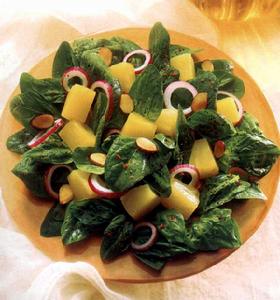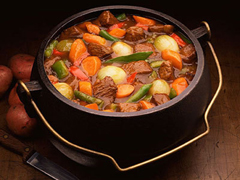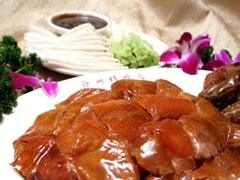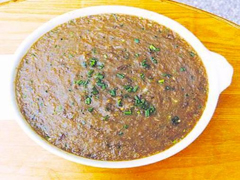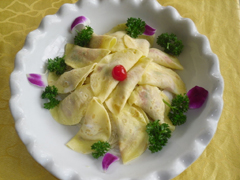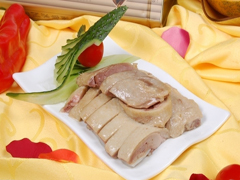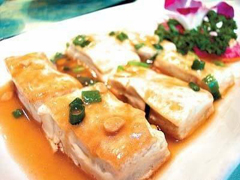
Anhui cuisine, or Hui cuisine, is one of the Eight Culinary Traditions of Chinese cuisine. It is derived from the native cooking styles of the Huangshan Mountains region in China and is similar to Jiangsu cuisine.
Introduction
| Anhui cuisine is known for its use of wild herbs, from both the land and the sea, and simple methods of preparation. Braising and stewing are common cooking techniques. Frying and stir frying are used much less frequently in Anhui cuisine than in other Chinese culinary traditions. Anhui cuisine consists of three styles: the Yangtze River region, Huai River region, and southern Anhui region. Anhui has ample uncultivated fields and forests, so the wild herbs used in the region's cuisine are readily available. Among the dishes on the Ahhui cuisine menu, you will find less fried or quick-fried dishes than those that are braised. People here are inclined to add ham as seasoning and sugar candy to enrich the freshness and are quite accomplished in the art of cooking. | |
-------------------------------------------------------------------------------------------------------------------------------------------------------------------------
Foods
Among these Anhui Cuisine delicacies, some of the traditional ones are outstanding:
| Li Hongzhang Hodge-Podge |
|
| | A popular dish named after Li Hongzhang,a prominent statesman in the Qing Dynasty who was from Anhui. The dish, a complex soup, is somewhat salty with a taste of sweetness. Many ingredients are used in the soup but the most common ones include sea cucumber, fish, squid, bamboo, dry bean curd, chicken, ham, and assorted vegetables. |
| Luzhou Roast Duck |
|
| | A popular dish from Hefei which first gained recognition when it was offered as tribute to the imperial court. While not as well known internationally as Peking Duck, Luzhou Roast Duck has won awards and distinction within China. |
| Sanhe Shrimp Paste |
|
| | A regional dish that originated in Sanhe, but can now be found in Hefei. The dish's main components are rice flour and a regional species of small white shrimp. The shrimp are stir fried with leeks and soy sauce, while the rice flour is soaked in water and later added to the shrimp. The dish is brown in colour and tastes pleasantly salty. It is eaten with a spoon. |
| Egg Dumplings |
|
| | These dumplings, usually associated with rural cooking, use thin sheets of egg instead of flour for the wrapping. Egg dumplings traditionally use pork as a filling. In preparation, a ladle is lightly coated with oil and heated, well beaten eggs are spooned into the ladle and cooked until the mixture forms a dumpling wrapper. The pork filling is then spooned into the egg wrapping and the entire dumpling steamed. It is often served with soy sauce. |
| Wushan Imperial Goose |
|
| | The history of Wushan Imperial Goose dates back more than 1,000 years to the Tang Dynasty. The dish is lightly coloured and has a fragrant and salty taste. |
| Bagongshan Stinky Tofu |
|
| | CAUTION: Tofu is about 50% fat, so if you are focused on fat calories, you might not like this. NOTE: Cooking Stinky tofu May smell up the whole house
|
Written by Nicolas Yang
